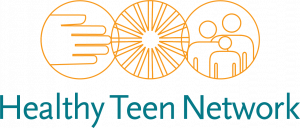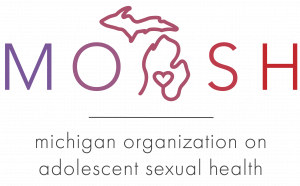What are the basics of maintaining privacy and confidentiality for adolescents accessing sexual and reproductive health care? Learn as you follow the story of Kendall, a 16-year-old who visits her school-based health center. Please download the Privacy & Confidentiality Worksheet before beginning the course. Throughout the course, you will be asked to reflect and respond to various situations.
Training Hub
The Sex Education Collaborative Training Hub lists trainings for sex educators, facilitators, and other professionals on best practices for sharing important information with clients and the public. From teaching anatomy inclusively to effectively addressing bias in the classroom to addressing racial justice and equity in sex education, the Training Hub includes trainings, technical assistance, and policy support from state, regional, and national leaders in the field of sex education.
Please note: The Training Hub includes both in-person and online professional trainings. If you see a training you are interested in and it isn’t listed as virtual, please reach out directly to any of our members to find out what's possible!
Trainings Offered by State-Based and National Organizations
Displaying results 116 - 120 of 137Privacy & Confidentiality for Adolescents Accessing Sexual & Reproductive Health Care
- Indicator 1 (K-12): Demonstrate three techniques to create an inclusive and affirming learning environment. (S)
- Indicator 3 (K-12): Describe three elements of a trauma-informed approach to sex education.
Sexual Anatomy and Response: Getting Under Your Skin
Sexual Anatomy and Response: Getting Under Your Skin helps middle and high school health professionals teach young people how their bodies work, so that students have the foundation to learn about other sexuality-related topics, like pregnancy and STD prevention.
Format/platform:
- Online Learning Management System (Canvas e-learning), hosted by Rutgers University
- Six-hours of total contact time utilizing videos, podcasts, instructional games, discussion boards, written assignments, presentations, readings, and visual animations
- Asynchronous
- Instructor-led
All content is aligned to the National Sexuality Education Standards, the National Teacher Preparation Standards for Sexuality Education, the Professional Learning Standards for Sex Education, and the Areas of Responsibility and Competencies for Health Education Specialists.
- Indicator 2 (K-12): Demonstrate three student-centered instructional approaches that support a variety of learning styles. (S)
- Indicator 2 (K-12): Demonstrate the ability to use medically accurate terms for sexual and reproductive anatomy, including all external genitals. (S)
- Indicator 3 (K-12): Explain the function of the individual sexual and reproductive body parts and how they typically work.
Virtual PD - Culturally Responsive Instruction When Teaching Sex Education
Virtual Professional Development is a simulated classroom where teachers can practice teaching student avatars using short scenarios and support from an instructional coach, so they can quickly learn and master the skills they most need to be effective. With upper elementary, middle and high school classrooms, Virtual PD has scenarios for teachers of all grade levels across a wide range of topics aligned with the Professional Learning Standards for Sex Education (PLSSE). You can watch the video here (link is external) to learn more about Virtual PD.
Using the Virtual Professional Development classroom simulator, the educator will practice Culturally Responsive Instruction When Teaching Sex Education with the student avatars. In this scenario, the educator is teaching a lesson on different kinds of families with their students. After allowing students time to list their own ideas, the educator asks students to engage in a think/pair/share activity to see if they can add to their lists. They then facilitate a brainstorm activity about different kinds of families. In this simulation with five students, the participant will need to demonstrate three strategies for creating culturally responsive classrooms.
- Indicator 2 (K-12): Demonstrate three strategies for creating culturally responsive classrooms. (S)
What About the Boys?: Teaching About Sexuality Accurately and Effectively with Teen Boys
The vast majority of sexuality education curricula and programs are created with the needs of girls in mind. Even if we don't believe it ourselves, the saying “boys will be boys” pervades sexuality education programming. Girls are set up as the sexual gatekeepers and decision-makers. Boys are either set up to be feared or widely ignored. This training will provide the most up-to-date information available about how boys learn, how co-ed sexuality education programming has failed boys, and what educators can do to be sure to reach all students and workshop participants. This workshop can be tailored to meet the specific needs of your group, school or agency. All content is aligned with the National Sexuality Education Standards, the National Teacher Preparation Standards for Sexuality Education, and the Professional Learning Standards for Sex Education.
- Indicator 1 (K-12): Demonstrate three techniques to create an inclusive and affirming learning environment. (S)
- Indicator 7 (K-12): Demonstrate the ability to analyze and tailor lesson plans to match the age, developmental stages, cultural backgrounds, and other identities of students. (S)
SIECUS: Sex Ed for Social Change has provided trainings to thousands of individuals and nonprofit organizations across the country. SIECUS’ policy team is uniquely positioned to offer trainings for all types of policy activity and engagement at all levels of government–federal, state, and local. Our trainings our developed to enhance participant understanding of influencing public policy, learn what it takes to engage in effective advocacy, and strategically mobilize to advance sex education laws and policy.
Our trainings are designed for advocates, educators, policymakers, health care providers, parents, and youth to aid in efforts to advance sex education in every community across the country.
Trainings and workshops can be customized and combined depending on your organization’s or community’s specific needs and the intended audience.
After your training, you can follow up with any questions you may have as part of our free technical assistance program. Please email us at info@siecus.org.
- Indicator 2 (K-12): Describe state and/or district laws, policies, and standards that relate to sex education where one teaches.
Additional Trainings offered by out-of-state organizations
- 1 of 49
- next ›
MOASH provides support with policy development, interpretation, and implementation at the state, school district, and K–12 school building levels. Policy topics include primarily sexual health education, sexual and reproductive health rights, and LGBTQIA+ inclusion and affirmation. MOASH works alongside communities to address their unique concerns and needs. Support may include technical assistance, training, and resources. For more information about policy assistance, please contact MOASH’s Advocacy Director, Kelly Stec at kelly.stec@moash.org




